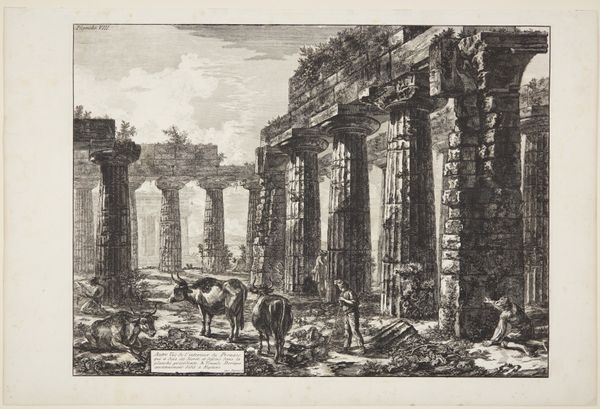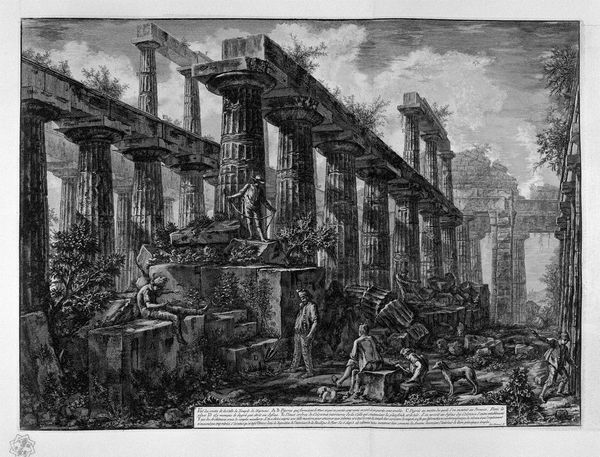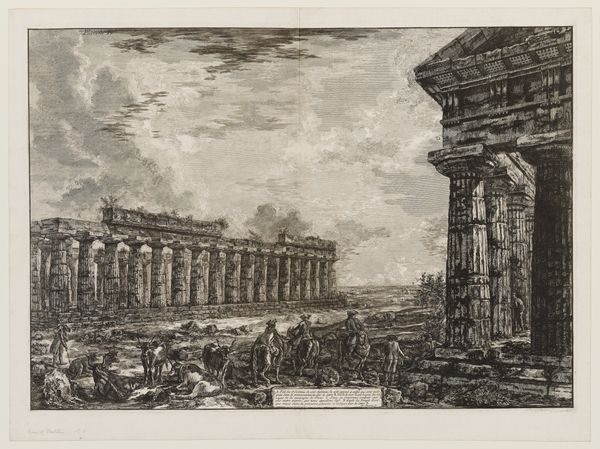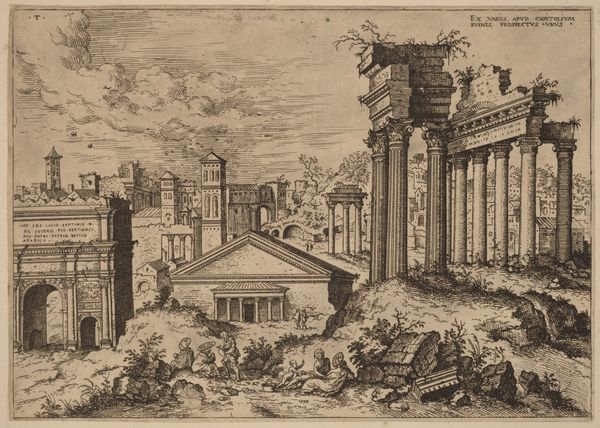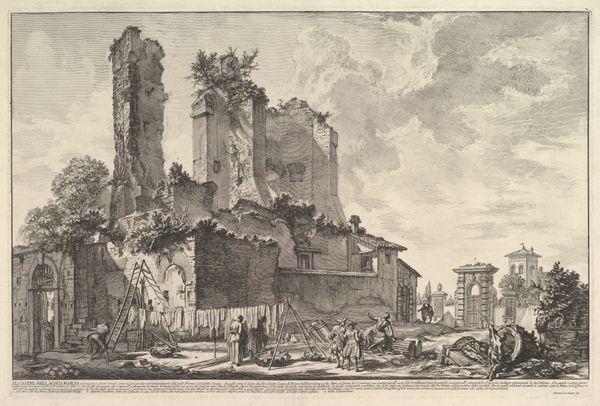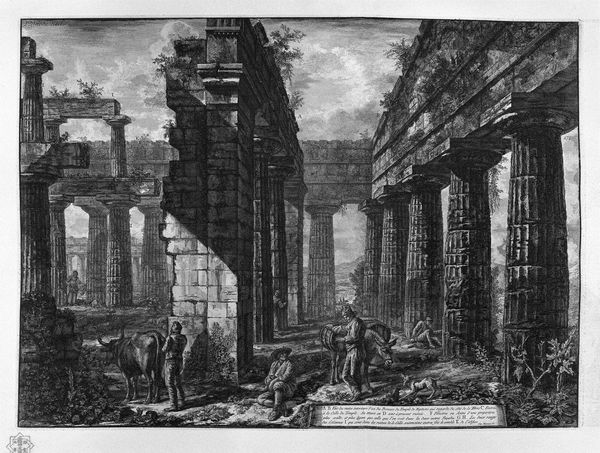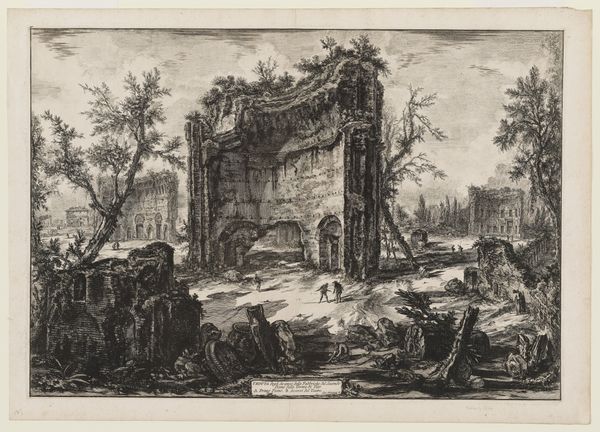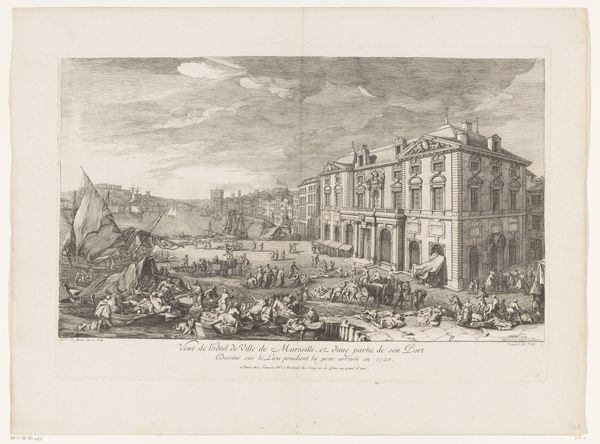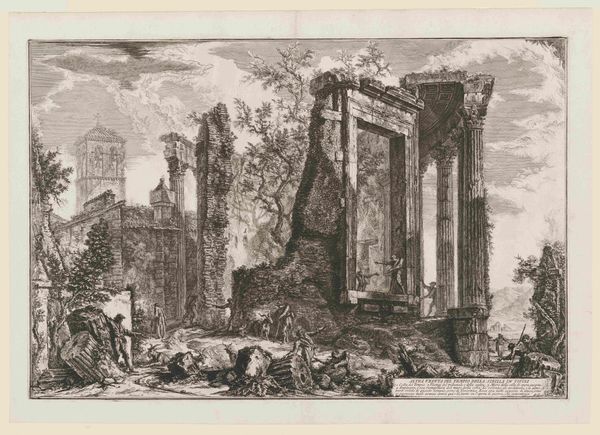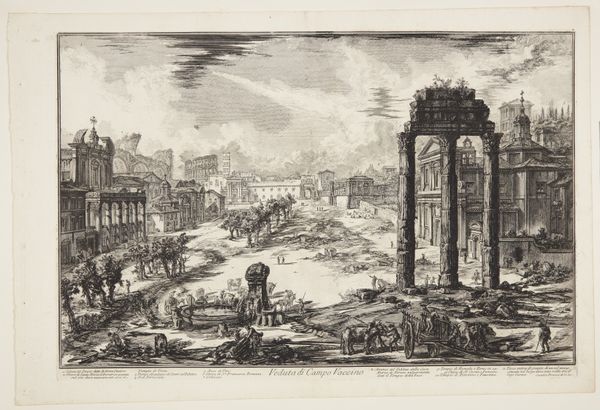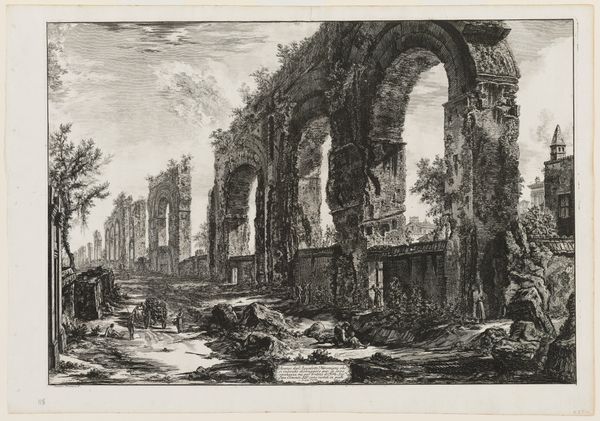
print, etching, architecture
# print
#
etching
#
landscape
#
ancient-mediterranean
#
history-painting
#
italy
#
architecture
#
realism
Dimensions: 19 13/16 x 26 7/8 in. (50.32 x 68.26 cm) (plate)20 3/8 x 27 7/16 in. (51.75 x 69.69 cm) (sheet)
Copyright: Public Domain
Editor: This etching, titled "Ruins of Cella," was created by Giovanni Battista Piranesi in 1778. It portrays, as you can guess, a ruined classical structure. It really evokes a sense of romantic decay, almost like nature is reclaiming what was once grand and ordered. What catches your eye when you look at this print? Curator: What immediately strikes me is the deliberate presentation of the past. Piranesi wasn’t just depicting ruins; he was actively shaping the viewer’s understanding of Roman grandeur and its subsequent decline. He highlights the power of the past by portraying how its decline still remains standing for many years after. This aesthetic aligns with the period's obsession with antiquity. Do you think that’s merely about aesthetics? Editor: Well, perhaps the nostalgia goes beyond beauty? Maybe it's tied to a yearning for past empires during times of political changes or shifts in society? Curator: Precisely! Consider how this image might have resonated with wealthy Europeans on the Grand Tour, visiting Italy to witness firsthand the remnants of a fallen empire. Prints like these weren’t mere souvenirs. What would they take with them? Editor: Perhaps this is how the Grand Tour would teach the European public how the current cultural changes could be compared to historical precedents. In addition, prints allowed wider circulation to viewers unable to witness Rome directly. So they acted like political allegories? Curator: Yes, indeed! It created awareness for larger audience. How fascinating that this image could convey an artistic and political statement simultaneously! Editor: Absolutely! I hadn't thought about how deliberately constructed that "romantic decay" really is. Seeing it as part of a broader political and cultural conversation adds so much depth! Curator: And that's the exciting thing about art history: objects act as primary sources reflecting how artists wanted society to be. They allow you to explore not just what something looks like, but also what it *means* in its own time and for posterity.
Comments
No comments
Be the first to comment and join the conversation on the ultimate creative platform.


